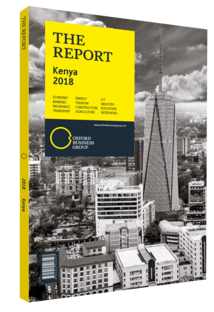The development of geothermal assets is up for debate in Kenya
A new Energy Bill – which completed its public consultation phase in February 2018 – may result in a significant shake-up of Kenya’s geothermal segment. Significantly, the draft legislation lays out a royalties schedule. The raft of laws has been passed by the National Assembly but was still awaiting Senate approval as of September 2018. The bill will see geothermal firms pay fees of between 1% and 2.5% of the revenues generated from the energy source during their first decade of operation and 5% thereafter.
These efforts form part of a broader strategy to close the country’s structural fiscal deficit by securing new sustainable revenue streams. According to the IMF, the budget deficit stood at 7% of GDP for the FY2017/18 ending in June 2018, although this is down from 9% in the previous year. The government also plans to target the country’s current account deficit, which was 6.7% of GDP in 2017 compared to 5.2% in 2016, according to the IMF.
Standard Practice
The proposed royalty on profits is a standard model in the international geothermal market. For example, the US has deployed a similar framework for decades, applying a modest rate of 1.75% for the first 10 years of production, before moving companies to a royalty rate of 3.5% thereafter. Nevertheless, establishing the precise rates constitutes a challenging undertaking. Geothermal resources of Kenya’s size are strategically vital to economic development; ensuring energy security, generating employment and providing income, in the form of rent, for landowners.
Introducing a royalty scheme appears set to establish an important new revenue stream for the government, but it also risks raising the cost of extraction. Establishing an appropriate framework for royalties and taxation therefore requires a balancing act. The details of the new framework are likely to be a focus of discussion over the coming years. Of particular interest to stakeholders is the relationship between the average level of future electricity demand and output, and the projected increase of operational costs for the duration of their projects. Notwithstanding, the Kenya Electricity Generating Company aims to add 1745 MW of geothermal energy to the grid by 2025, with a target of 5 GW by 2030 of installed capacity or generation. Moreover, with an estimated untapped potential of 10,000 MW, the revenue potential inherent in the geothermal industry is considerable.
Regional Interests
Another key issue addressed by the proposed law is the regional distribution of revenues. A devolved model of revenue sharing was established with the nation’s 2010 constitution. Therefore, the government has had to be mindful of Kenya’s regions in these matters. Indeed, a disagreement regarding the distribution of oil revenues in 2018 demonstrates the sensitivity of this subject. County authorities were initially allocated 20% of oil revenues, but this figure was then reduced to 15%.
As a result of the proposed royalty reforms, local communities adjacent to power-producing geothermal wells are expected to eventually receive 5% of the revenue derived from royalty payments. Furthermore, in order to ensure transparency of operations in the management of this income, policymakers have outlined a plan for the establishment of trust funds managed by a board of trustees.
Meanwhile, under the new legislation, Kenya’s 47 counties are set to be granted 20% of revenues, provided this sum does not exceed the county’s budget allocation from the central government by more than 50%. Nevertheless, this clause may give rise to frictions between regional administrations and the central government, in a manner similar to that experienced with oil. Therefore, given these points of potential disagreement, the geothermal component of the bill before the Senate is likely to be fiercely negotiated over 2018 and into 2019.
You have reached the limit of premium articles you can view for free.
Choose from the options below to purchase print or digital editions of our Reports. You can also purchase a website subscription giving you unlimited access to all of our Reports online for 12 months.
If you have already purchased this Report or have a website subscription, please login to continue.

